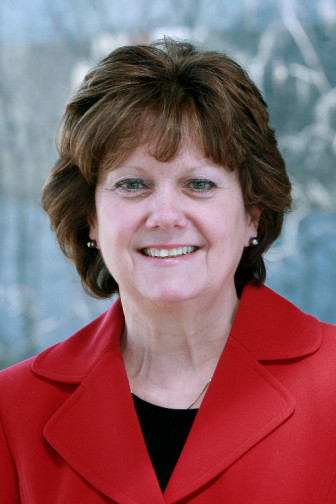
Jeanette Hercik

John L. Denniston
California’s Linkages Project, a collaboration between the state’s Temporary Assistance for Needy Families (TANF) and child welfare agencies, was created because, historically, these two systems had worked at cross-purposes. Each struggled to serve children and families well. If they worked together, Linkages surmised, children and families would be safer, stronger and more financially independent.
Linkages is one of a handful of initiatives across the country taking a critical look at the intersection between TANF and child welfare families and services.
Looking nationally at these intersections, the overlap between the two systems’ targeted populations is clear. A 2013 report from the U.S. Department of Health and Human Services (DHHS) Administration for Children and Families (ACF) Children’s Bureau states that more than half of all foster children come from families who are eligible for TANF. The report also notes that most families receiving in-home child welfare services also receive TANF benefits. Additionally, almost half of all TANF cases are “child-only,” meaning only the child or young person in the home is eligible for and receiving TANF benefits (the parent may be ineligible due to unknown citizenship, receipt of SSI benefits or be out of the home).
A recent DHHS TANF report to Congress, as well as a report from its ACF Office of Planning, Research and Evaluation also found that these “child-only” families look similar to foster care families in that approximately 40 percent of “child-only” kids reside with a “relative caregiver.” Many of these children are living with relatives because they can’t, for a range of reasons, live with their parents.
Recent groundbreaking research in the fields of psychology, child development and neuroscience show strong links between poverty and child maltreatment. The research suggests that significant family adversity can have long-lasting effects on children’s economic, social and family stability well into adulthood. For example, there is growing consensus that “toxic stress,” the physical stress a child can experience related to consistent and recurring hardships such as abuse and neglect or poverty, without mediation, can take a cumulative toll on a child’s physical and mental health, affecting the child’s development, brain circuitry and long-term functioning.
Despite these overlaps and emerging research, the TANF and child welfare systems have different foci, performance metrics, funding streams, support services and data collection and tracking systems. While the TANF system focuses primarily on work and employment supports to needy families, the child welfare system focuses on child safety, well-being, permanency and intensive case management supports for children, youth and their caregivers.
Collaboration between TANF and child welfare could provide more holistic support to families — promoting economic stability, education and training opportunities, employment placement, parenting education, mental health and family support services and intensive case management. It could ease the burden faced by families having to comply with two case plans. Collaboration may also increase opportunities to identify family needs early and ensure families access the right systems — maybe even preventing some TANF families from becoming involved with child welfare at all.
Recognizing opportunities for improvement, the federal government recently funded several clusters of demonstration grants, including ones focused on tribes and relative caregiver navigation programs. These demonstrations supported and assessed innovative approaches to building partnerships between TANF and child welfare.
One of these grant clusters was a five-site initiative, including Linkages, focused on increasing service coordination between public TANF and child welfare systems. A 2013 synthesis report of the demonstrations found that key strategies used by sites to improve coordination included joint and cross-training for agency staff; compatible or shared procedures, protocols and project metrics; and coordinated case planning and case management of shared cases.
The report highlighted lessons learned and advice from the five sites, including:
- TANF and child welfare systems interested in collaborating should take time to plan and prepare before diving in.
- Each system must have their leadership’s commitment to successfully implement and sustain the partnership.
- Meaningful, lasting partnerships clearly outline roles, responsibilities and accountability measures.
- Each system must recognize the importance of data and evaluation for continuous quality improvement and decision-making, as well as the difficulties of conducting research in a cross-system human services environment.
The five-site initiative found that increased service collaboration between TANF and child welfare services resulted in jointly served families facing fewer barriers, experiencing higher customer satisfaction and improved outcomes. Agency staff also reported improved efficiency, increased job satisfaction and improved results for families. And, although federal funding ended in 2011, at least four of these intersystem collaborations continue today.
These federal demonstrations showed promise that families facing poverty and at risk of child maltreatment are safer, stronger and more self-sufficient when TANF and child welfare systems collaborate.
To work together to improve outcomes, systems must construct a shared vision, said Dana Fabella, Linkages Project director at a recent webinar highlighting demonstration project experiences. “The foundation for this vision,” she said, “is that poverty is a risk factor for child abuse and neglect.” Understanding this connection and successful partnership strategies will improve system operations, staff morale and most importantly, child and family outcomes.
Jeanette Hercik, Ph.D., is a senior vice president at ICF International and oversees the National Responsible Fatherhood Clearinghouse and the National Resource Center for Healthy Marriage and Families. John L. (Jack) Denniston, M.S., is a senior technical specialist with ICF International and works on behalf of the U.S. Children’s Bureau’s Child Welfare Information Gateway and Division of Program Innovation.

























